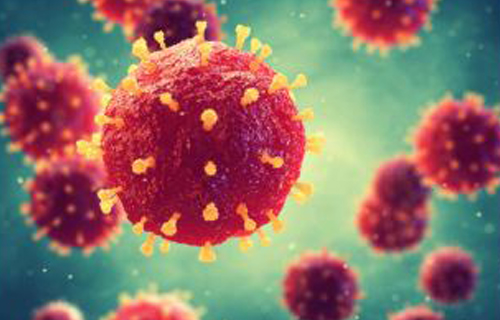Clostridium difficile Infection in the 21st Century – Part II
- News
-
Apr 14
- Share post

We know that C diff infection is a big problem in healthcare settings – hospitals, nursing homes, other forms of care homes – because those who are most vulnerable to the effects of the infection are all gathered together in the same location, belong to the same families, and are cared for by the same caregivers. The disease is spread by skin-to-skin transmission. All that must happen for effective transmission of the infection is for someone who is already infected (or simply a carrier of the organisms) to go to the bathroom, wipe themselves, wash their hands inadequately (or not at all) and touch a telephone, or a table, or a bedside stand, or another person. The spores, as we have seen, are viable for a very long time on exposed surfaces.
How is the disease diagnosed? Both toxic and non-toxic forms of C diff exist. A patient may be an asymptomatic carrier of C diff and show a positive test result on stool testing. Such patients do not need to be treated, but they may be a source of transmission of the infection to other patients who may then require treatment. These carrier patients are a kind of C diff Mary, like the 19th century carrier of another form of intestinal fever caused by the bacterium Salmonella typhi, also spread through fecal contamination. In the 21st Century, we no longer need to travel abroad to acquire a severe potentially life-threatening bacterial infection of the intestinal tract. We can acquire it here at home, just by taking antibiotics and being vulnerable.
The trickiest part of this C diff infection is the fact that the organisms may persist in the GI tract without causing symptoms, so a repeat stool culture or PCR test cannot be used as a sign of cure. We are forced to rely on assessing the health of the patient to gauge success of treatment. If they die, our treatment failed. If they survive but are still symptomatic, our treatment failed. If they survive, our treatment did not fail but they still may be carriers.
It is an interesting philosophical question to debate, whether we should re-test all those who tested positive and were treated for C diff in the hopes of identifying carriers. What do we do with this information? Ban them from healthcare settings? Set up nursing homes specifically for carriers of C diff? Require them to wear some kind of marker indicating that they are a C diff Carrier? Develop a vaccine and require proof of vaccination before they may be admitted to a healthcare facility? The ramifications are sobering…
The IDSA considered this question but declined to make a recommendation in their 2017 Guidelines.
What determines who gets infected, who gets cured and who continues to be a carrier? According to one study, those who are older (only by four years, according to this study) were more at risk, as well as use of antibiotics and proton pump inhibitors (acid-decreasing drugs like omeprazole Prilosec® and other OTC acid blockers) are more at risk for infection. Carrier risk is increased by previous hospitalization, chemotherapy, proton pump inhibitors, acid blockers and the presence of antibodies against C diff toxic B. Chemotherapy, proton pump inhibitors and acid blockers all change the bowel microbiome (population of organisms in the gut). It is tempting to think that perhaps modifying the microbiome might effect a change in the rate of hospital-associated infection with C diff.
How is this infection treated, when it is symptomatic and diagnosed?
- First, stop any ongoing antibiotic therapy
- Second, start appropriate CDI antibiotic treatment
Please notice the absence, in “standard of care” recommendations, for any recommendation for adjunctive therapies. “The effect of adding probiotics to antibiotics remains controversial” according to a recent CME offering available online. A 2017 Cochrane review evaluated 39 studies involving 9955 participants; a completed case analysis on 31 of those studies involving 8672 participants suggested that when given to patients on antibiotics who do not have a history of CDI, and who are not immunocompromised by chemotherapy, or extremely debilitated, probiotics reduce the risk of CDI by up to 60%, particularly in patients with an elevated baseline risk. In fact, probiotic therapy reduced the risk of adverse events of antibiotic treatment by 17%. Adverse events of antibiotic treatment include abdominal cramping, fever, soft stools, intestinal gas, and taste disturbance.
IDSA guidelines recommend oral vancomycin or fidaxomicin for initial treatment of C diff infection. A study published in 2014 showed that “Clinical cure rates were similar for fidaxomicin and vancomycin; … Recurrence … was significantly lower and sustained cure rates … significantly higher for fidaxomicin than vancomycin.” Another study published in 2011 showed similar findings, with lower recurrence rate and similar adverse events. One recent study concluded: “More randomized clinical trials are needed to shed light on this matter to assess if there is any clinical significance in fidaxomicin superiority.” That conclusion came immediately after the sentences: “The aim of this study is to evaluate the clinical data available comparing the efficacy of primary treatment of CDI between those two antibiotics… Compared with vancomycin, fidaxomicin use was associated with a significantly lower recurrence of CDI… our review suggests that fidaxomicin has a more sustained clinical response with a statistically significant lower recurrence rate.” It is not clear to me why vancomycin continues to be recommended, when another drug has a similar cure rate and results in fewer recurrences of infection. Possibly a difference in cost to the patient or insurance company…
And the evidence for the effectiveness of fecal transplantation procedures? Those who have had one, and whose diarrhea has stopped, would say with gratitude to the donor that the transplant was effective.
The ancient Chinese emperors were said to value sleeping with virgins for the anti-aging effects. It is never specified which (or whether) bodily fluids are exchanged during this activity – but it is tempting to speculate that perhaps it was not such a crazy proposition after all – at least if we consider the evidence from mouse studies.
A fascinating mouse study published in 2018 showed that young mice withstood deliberate infection with C difffar better than old mice (17% compared with 83% death rate). However, when stool bacteria were exchanged (simply by putting young and old mice in the same cage and allowing them to do their coprophagic thing), the old mice regained their youthful resilience, and had only a 20% death rate when deliberately infected with C diff. “This finding implies that the cage switching corrected an abnormality (possibly replenished what was previously lacking) in aged mice while not transmitting a detrimental factor to young mice.” The conclusion of the authors, after measurement of a multitude of inflammatory markers, was that cage exchange (= microbiome exchange, for mice) restored the immune system of aged mice to a more youthful function. The researchers further went on to define the specifics of the microbiome lacking in the old mice. They found significantly lower Bacteroidetes in the older mice. When mice were treated with antibiotics before infection, their microbiome shifted toward Proteobacteria in both young and old mice. So the difference did not lie in the increase in proteobacteria. The significant difference appeared to lie in the decreased early innate immune response to infection paired with increased delayed immune response to infection.
Intestinal bacteria play a role which extends far beyond the gut. Mice depleted of intestinal bacteria have poor clearance of infection from their lungs, which effect can be reversed by replenishing the intestinal bacterial population. It truly does take a village to keep an organism alive. The enemy cannot prevail over a well-guarded community. The only requirement for evil (in this case, harmful bacteria) to flourish is for good people (in this case that means us) to do nothing. If we modify our diet to healthier (meats, fruits and vegetables) and give up hanging on to that over which we have no control (the chemical composition of fast foods), we open ourselves to colonization by beneficial bacteria who will protect us from the onslaught of pathogenic bacteria like Clostridium difficile. The choice does appear to be ours.
Read more here.
